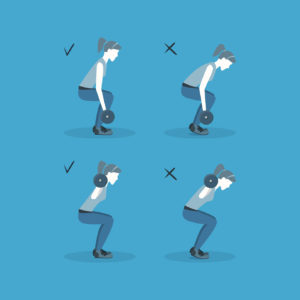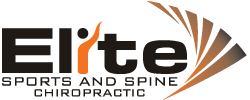A squat motion is utilized in our lives on a regular basis; whether we are getting up and down out of a chair, bending down to pick something up off the ground or in the gym on leg day, it’s important to utilize proper squat form to avoid injury. With the squat movement being so prevalent in everyday life, it’s important to emphasize form and be aware of the do’s and don’ts of squat form. Here are 5 important tips on how to improve squat form and reduce the risk of developing injury.
Don’t feel like reading through this? Check out this step by step video here!
Here’s how you can improve squat form:
-
Engage your core
During a squat, just like with most movements, it’s important to brace our core as we go through the full movement pattern. By engaging our core musculature, we are ensuring that our lumbar spine maintains a neutral position and avoids any excessive flexion or extension as we move through the squat motion. By keeping the spine in a neutral position during proper squat form, we are protecting ourselves from the potential of a low back injury such as muscle strains and disc injuries. Engaging our core helps to keep our spine safe during a squat, and also helps to generate power to complete the squat movement.
-
Hip hinge movement
The hip hinge has become a staple of the squat movement, and for good reason. By performing a hip hinge (pushing our butt out and driving out hips backwards) as we initiate a squat helps to distribute our weight, and any added weight, through our hips and glutes. This allows us to generate more power through our quads and glutes (two of the most powerful muscle groups in the body) and keep stress off our lumbar spine to achieve proper squat form. By sitting our hips back, we not only generate more power but also protect ourselves from injury. Undoubtedly, proper hip hinge movement will help you improve squat form.
-
Keeping our chest up and shoulders back
Upper body positioning during a squat is often overlooked because the squat is a lower body movement. In order for a squat to be successfully performed, we must emphasize correct positioning of the upper torso: shoulders back and chest up. It’s a key to improve squat form successfully. These movements allow our spine to remain in a neutral position throughout the squat movement, maintaining proper squat form and eliminating unwanted stress on the lumbar spine. If your chest is down and shoulders are rounded while performing a squat, we are translating the load forward, rounding our back, and putting a lot of stress on our spine and knees – which can lead to injury.

-
Keeping our knees in line with our toes
Knee positioning during a squat is a common teaching point, and rightfully so. During our squat, we want our knees to be directly lined up with our toes as we descend into the squat position and again as we press back to our neutral, standing position. Too much forward translation of the knees over the toes puts a lot of stress on the knee joint itself, while excessive medial or lateral translation (valgus or varus stress, respectively) will put large amounts of stress on the extrinsic tissues of the knees, including the ligaments and tendons attaching to the knee. Doing this improper motion will make it difficult to improve squat form. To achieve proper squat form, our knees need to be in line with our toes, protecting our knees from damage and ensuring completion of the squat movement. Be sure to reference the image above to see this explained visually.
-
Proper Breathing Patterns
Don’t forget about breathing patterns, and how they correlate with improving your squat form! Correct breathing patterns should be utilized during any movement. With proper squat form, we want to focus on inhalation as we descend into our squat, breathing through our belly or diaphragm. Our inhalation and bracing of our core muscles occur simultaneously. As we drive upward from our deep squat position, we should be exhaling and expelling the air out of our lung. IMPORTANT NOTE: Breathing should be performed through our belly, NOT our chest!!!
Be sure to check out this video for more details!

